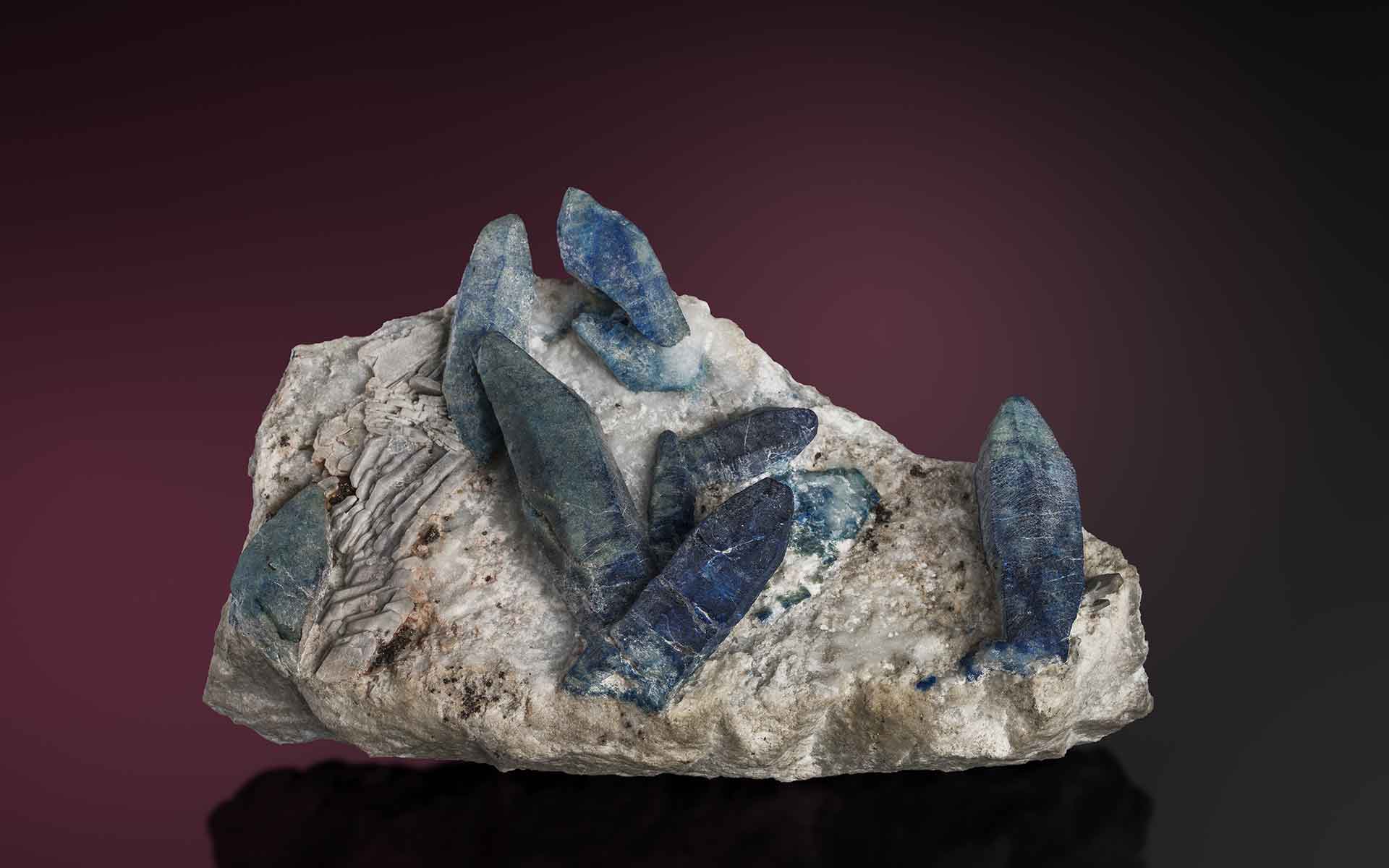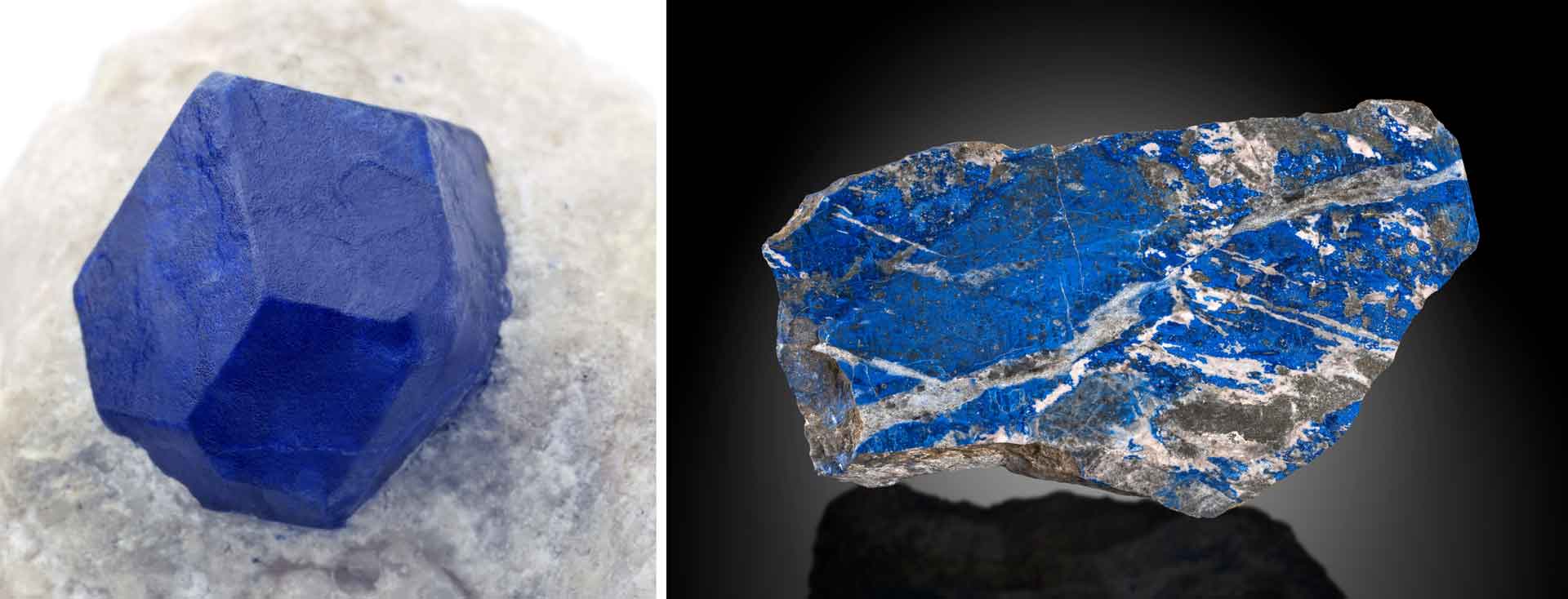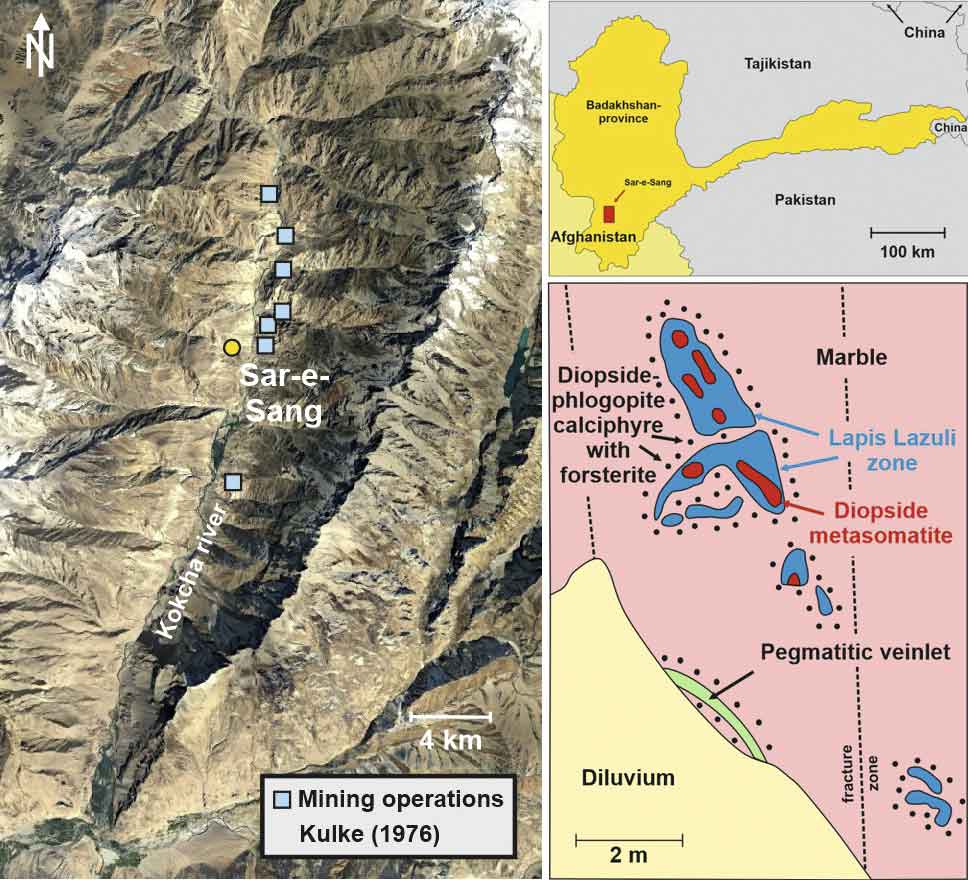
Afghanite crystals (12.5 x 7.5 centimeters; photo by H. Meyer).
Geological Period
Archean
Main geological interest
Mineralogy
Igneous and Metamorphic petrology
Location
Badakhshan, Afghanistan
36°12’36”N, 070°47’36”E
Afghanite crystals (12.5 x 7.5 centimeters; photo by H. Meyer).
One of the most classical localities of Lapis Lazuli on Earth that occupies a scientific key position between geoscience and archaeology.
Lapis Lazuli and its related localities at Sar-e-Sang are of unique mineralogical interest, since this material represents the most spectacular occurrence on Earth. In addition, Lapis Lazuli plays a crucial role in Archaeology. It is known to be mined even in the Neolithic Period where it already became transported over long distances. Lapis Lazuli was discovered as pieces of jewelry in graves dated between 7,000 and 5,000 B.C., the most stunning artefact, however, is the golden funery mask of Tutankhamun that contains inlays of Lapis Lazuli from Sar-e-Sang and that was excavated by Howard Carter in 1925.
- Geological description
In the Hindukush Mountains, in the far northeast of Afghanistan, a mining district is located that has occupied mankind for more than about 10,000 years. This district comprises spectacular outcrops of lazurite, a mineral of the sodalite group that is the most important component of Lapis Lazuli. Commonly also pyrite and calcite are present. Lapis Lazuli forms up to 6 meter thick lens-like bodies and layers in calcite- and dolomite-marbles, associated with diopside skarn and forsterite-bearing calciphyre, which is essentially a Ca- and Mg-silicates-bearing marble skarn. The formation of Lapis Lazuli is interpreted to result from metasomatic reactions between granitoids and marble. A major contribution of evaporitic rocks is indicated by sequences of anhydrite and whiteschist (Schreyer and Abraham, 1976). A geological sketch map of a typical occurrence of Lapis Lazuli in such a setting is shown below (modified after Yurgenson and Sukharev, 2010). The major mines are located close to Sar-e-Sang at the east side of the Kokcha river. Stratigraphically the deposits belong to the Sakhi formation of the Archean Sanglich Group. The Sar-e-Sang area is well known for spectacular specimens of lazurite, haüyne, sodalite, phlogopite, richterite, marialite, diopsite, dravite and even afghanite, some of which occur in gem quality.
- Scientific research and tradition
The Lapis Lazuli mines of Sar-e-Sang belong to the oldest deposits on Earth. Although in our days novel povenance studies on related artefacts are widespread using for instance micro-PIXE, Raman- or FTIR-studies, the scientific processing goes even back to Pedanius Dioscorides and Pliny who lived in the 1st century.
- Reference
Kulke, H. (1976) ‘Die Lapislazuli-Lagerstätte Sare Sang (Badakhshan)’, Geologie, Entstehung, Kulturgeschichte und Bergbau. Afghanistan Journal, 3, pp. 43–56.
Schreyer, W. and Abraham, K. (1976) ‘Three-stage metamorphic history of a whiteschist from Sar e Sang, Afghanistan, as part of a former evaporite deposit’, Contributions to Mineralogy and Petrology, 59(2), pp. 111–130. Available at: https://doi.org/10.1007/BF00371302.
Wali Faryad, S. (2002) ‘Metamorphic Conditions and Fluid Compositions of Scapolite-Bearing Rocks from the Lapis Lazuli Deposit at Sare Sang, Afghanistan’, Journal of Petrology, 43(4), pp. 725–747. Available at: https://doi.org/10.1093/petrology/43.4.725.
Yurgenson, G.A. and Sukharev, B.P. (1985) ‘Localization of Lapis Lazuli Bodies of Badakhshan and Their Mineral Zonation’, International Geology Review, 27, pp. 230–237. Available at: https://doi.org/10.1080/00206818509466410.
- Author(s)
Hans-Peter Schertl.
Ruhr-University Bochum, Germany.
Andreas Massanek.
TU Bergakademie Freiberg, Germany.


